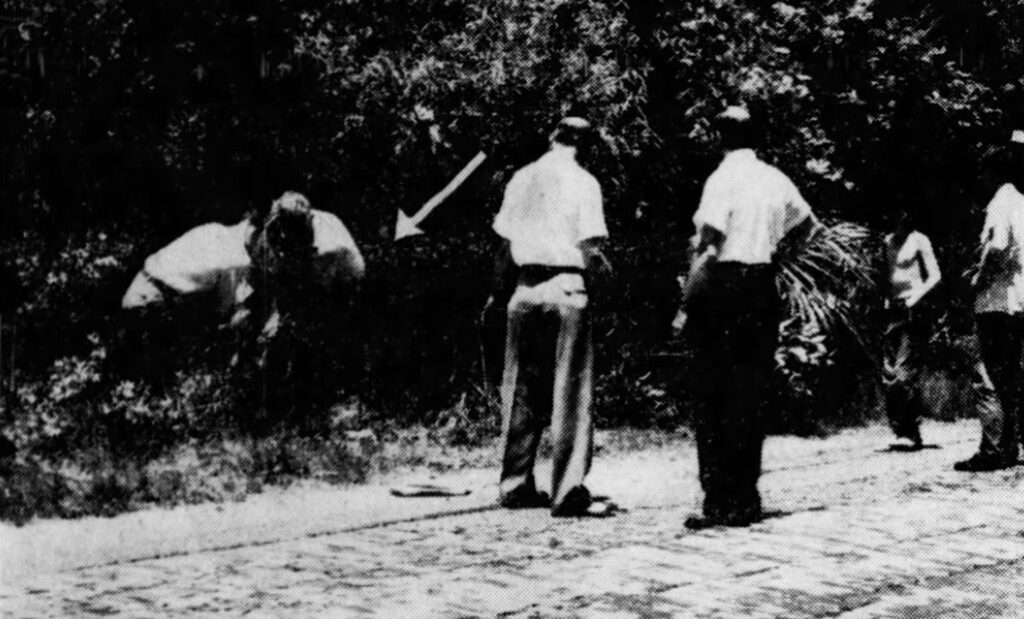
Ed Milam climbed to the top of the Central Florida gambling racket over two decades. However, his reign as the regional kingpin was short-lived. Hitmen took him on a “one-way ride” and dumped his body unceremoniously in a ditch in rural Osceola County.
We will examine Ed Milam’s career in the crime underworld of illegal gambling and the theories around his murder.
Early Life and Boxing Career
Emory “Ed” Doyle Milam was born in Wadley, Alabama, on July 31, 1908. It’s unclear when he arrived in Florida, but by 1929, he was well-established in Polk County. He married Hytha Marie Edenfield that year. In 1931, they welcomed Wanda June Milam into the world.

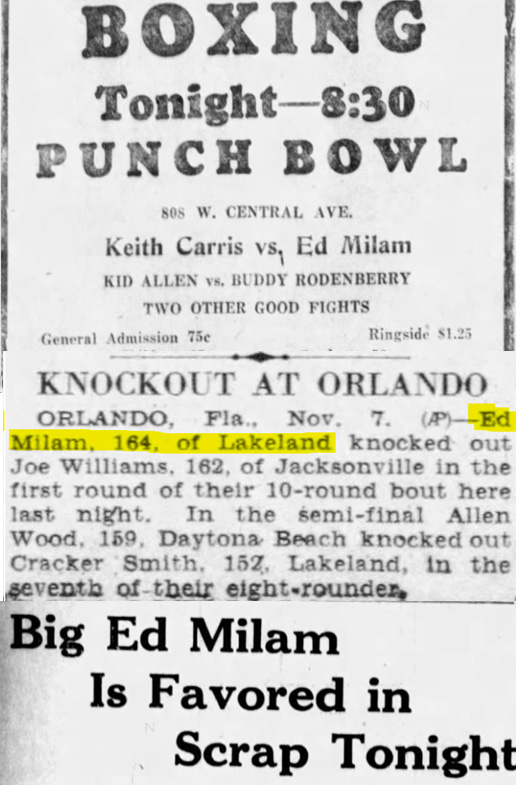
Edward entered the boxing circuit in the late 20s and gained a reputation and wide fanbase around Central Florida as a fierce contender. He was a lanky 6-foot-1, 166-pounder known for scrappiness and wingspan.
Promoters nicknamed him “Big Ed Milam” in fights he headlined at Orlando’s Punch Bowl Arena. In November 1929, he stunned crowds with a first-round knockout of well-known Jacksonville boxer Joe Williams in the main event match.
Call of Illegal Gambling

It’s not hard to imagine how boxing bets led to other forms of illegal gambling. Milam soon retired from the arena and began working at local nightclubs fueled by the gambling racket.
Prohibition was repealed in 1933; however, like many rural counties, Polk County remained dry. Demand for illegal booze was high, and drinking went hand-in-glove with gambling.
The regional headquarters was the Paramount Club and its sister establishment, the Cedar Tavern. They were next door to each other, located on Old Tampa Highway, three miles west of Lakeland and close to the Hillsborough County line at Plant City.
Rhodes Boynton was the proprietor of the Paramount Club, and he found Milam to be a suitable understudy. Besides other forms of gambling (slot machines, poker, roulette, and blackjack), Boynton made most of his money through two varieties of a lottery game called bolita.
The most basic form was “Cuba,” where gamblers placed wagers on numbers drawn weekly in Havana. Then there was a local form called “night house” or “moon,” where numbers were pulled out of a bag every night at the Paramount. Sometimes, a second daily draw called “day house” was thrown.
Bolita operated as a complex web of peddlers (or “bugs”) who sold the bets just about any place you can imagine. There were separate pick-up men for the tickets (documenting who bet what numbers) and the money, so they would never be together. And then a pay-out man delivered money to the winners. Payoff odds were anywhere between 60-to-1 and 80-to-1, depending on the operator.
Milam worked for Boynton as a pick-up man.
Boynton’s delivery man, Henry Hull, went missing in 1939. He was last seen at the Paramount, where some witnesses heard shots. Hull’s burned-out car was found on a rural road near Zephyrhills. Days later, he was found by fishermen. His body was anchored to weights in the Hillsborough River.
Hull left with $350 in payouts to deliver and a $200 cut for himself. The money was missing, but two bolita tickets were found in his pocket. Rumors suggested that Hull may have been skimming a little extra for himself.
Boynton, Milam, and six others were held by police for questioning. Milam remained in custody for several days, but police never had enough evidence to charge him.
The heat from the murder investigation cranked up. Local officials obtained an injunction against the club and were able to get it shut down by 1941.
Moving to Orlando

After Polk County made him feel unwelcome, Rhodes Boynton packed up and moved his racket to Orange County. He quickly established himself as the top regional boss there.
In 1944, Boynton purchased the Flamingo Cafe, a popular restaurant and nightclub, from former owner Thomas Peterson. The club featured top musical talent from around the country and was famous for its excellent food. It was also the not-so-secret new headquarters of Boynton’s gambling operations.
Milam remained in Polk County and became Boynton’s lieutenant in Lakeland and the phosphate mining district. This was the first time that Milam was effectively the local boss.
In 1946, deputies arrested two of Milam’s peddlers. It was commonplace for bolita to operate with the blessing of law enforcement… in exchange for a bit of side money. Unfortunately for Milam, these deputies could not be bought. When Milam offered them $200 to go easy on his employees, they slapped the cuffs on him.
The local sheriff, Sinclair DeWitt, made an example out of him. They fined him $3,000 (equal to $35,000 in 2024) and a sentence of ten years of probation. He was released with the condition that he leave the county. And that’s how Ed became an Orlando resident!
Pleads for Pardon Ignored
Ed spent the next several years pretending to be a changed man. He took over management of the Orange Fishing Lodge on Lake Apopka, near Ocoee. He even started going to church!
But authorities saw through the act. They denied his appeals to suspend his probation. And they were right! Milam was now Boynton’s vice-chieftain in Orlando, still pulling the strings in eastern Polk County.
That all came to light in 1951, when Milam fessed up as a star witness against new Polk County Sheriff Frank Williams. Milam’s testimony helped convict the sheriff, but it did nothing to convince the state to suspend his sentence.
Boynton’s Death Leaves Milam in Charge
In November 1949, Rhodes Cannon Boynton died of heart failure after weeks of illness. The fact that Boynton was only 44 leads some to believe something nefarious about his death, but it has never suggested that his friend Edward Milam had anything to do with it.
With Boynton gone, Milam became the new Orlando boss in 1950. He expanded the organization’s reach into new counties, including a near monopoly in Polk County.
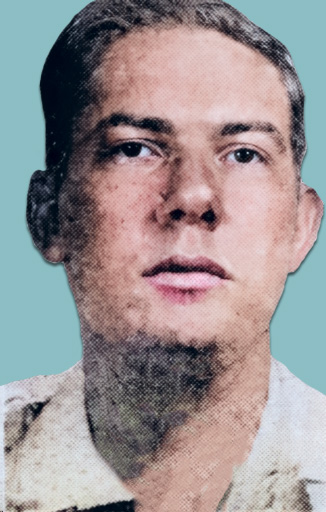
Enter: Harlan Blackburn
Harlan Alexander Blackburn had been a criminal since he was a teenager. He was first busted for forging a check at 16 years old in Brooksville. When he was 24, authorities busted him for stealing cattle.
However, he never appeared on anyone’s radar as a serious bolita kingpin until 1951.
Around that time, Santo Trafficante Jr. was taking over his ailing father’s Tampa crime family. Junior was substantially more boisterous than his father and looked to expand the business beyond Tampa. The Trafficantes were Italians but spoke fluent Spanish and had ties with New York mobsters. They split their time between Ybor City and Havana, where they had lucrative casinos with the blessing of dictator Fulgencio Batista.
The tight-lipped organized crime culture didn’t appreciate publicity or cooperation with authorities. So when Ed Milam testified so openly about his bolita dealings and bribery in the case against Polk County Sheriff Frank Williams, that didn’t make him many friends in Ybor.
So, in the spring of 1951, the Trafficantes threw their weight behind Harlan Blackburn. By the end of the year, he replaced Milam as the undisputed big man in Orlando. Harlan’s name would become synonymous with the mafia in Orlando. “The Colonel,” as he became known, was ruthless in defending his territory.
This meant, by extension, that the previously standalone Orlando mob was now an affiliate of the national Italian syndicate.
Milam Diversifies to Georgia
In the wake of Blackburn’s meteoric rise in his backyard, Milam opted to establish himself elsewhere rather than fight Trafficante-backed Blackburn. Ed purchased property on St. Simons Island (near Brunswick, Georgia) and opened a nightclub/restaurant and furniture store.
While he never completely left the Orlando bolita business, his name disappeared from the headlines. He spent increasing amounts of time in Georgia, intending to enter the new market using the nightclub as a base for gambling observations in South Georgia.
Blackburn Goes to Jail
There was a whole host of drama with Harlan in late 1952, but I’ll reserve the details for a future article! The TL;DR version is that, after getting off on numerous other charges, he was finally convicted in March of 1953. He was sentenced to one year in jail, and it looked like a host of local and federal charges were on deck.
This sent shockwaves through the Central Florida underworld. Many wondered who would fill that void if Harlan was locked up for an extended period. More than a dozen were potential successors; many believed Milam was near the top of that list.
While Ed left Polk County years ago, Polk never really left him. He saw the power vacuum as an opportunity to retake the Lakeland market. Ed worked out a three-way deal with Aubrey Marvin Lee and another unnamed boss to split up the district. However, within a couple weeks of making the deal, Lee was convinced to back out of the arrangement for reasons unknown.
However, there would be no successor. Even behind bars, The Colonel had no intention of surrendering his empire.
Milam probably should have taken a clue from Trafficante’s rival, Rene Nunez. The grapevine indicated Nunez wanted a piece of the Polk County market that Blackburn, by then, controlled. Nunez was shot execution-style in September 1952; no one was ever charged.
Ed’s fate was sealed. He just didn’t know it yet.
Milam’s One Way Ride
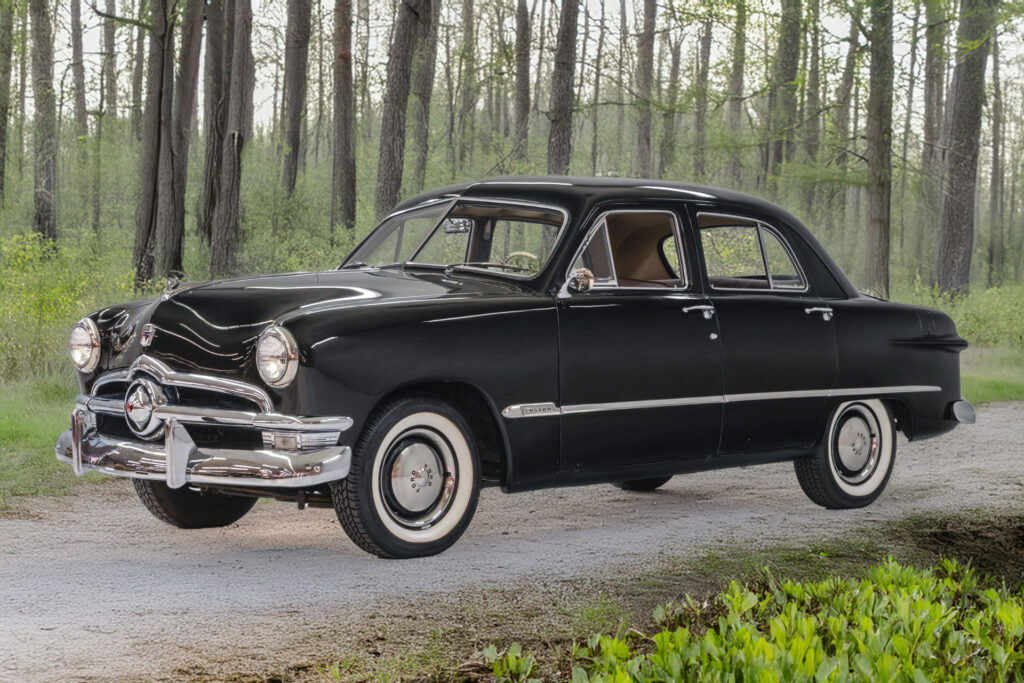
Ed received a phone call on May 11, 1953, around 5:00 PM. His wife, Mary, overheard him say, “Yes, OK, I’ll come down.” He said he had to go “meet a man” and should be back in a couple of hours “maybe sooner.” When she asked who he would see, he replied, “I’m not sure. Don’t question me.”
A witness saw him pull into the Chapman Fruit Company parking lot on Orlando’s Washington Avenue, tailed by a black or navy 1950 Ford. Milam left his car and was hurried into the backseat of the Ford with two men jumping in the front seat. The Ford, which had a Florida tag starting with 1-4 and a 6-inch hole in the rear glass, sped west at 5:45 PM.
Twenty minutes later, near Orlo Vista, another witness saw the same Ford followed by an Oldsmobile. The cars took a wrong turn down a sandy road. In their haste to turn around, the Oldsmobile backed into a rural mailbox. The witness noticed a pool of blood and what he thought was a bloody shirt on the floorboard of the Ford. Ed Milam was still in that shirt–most likely already dead.
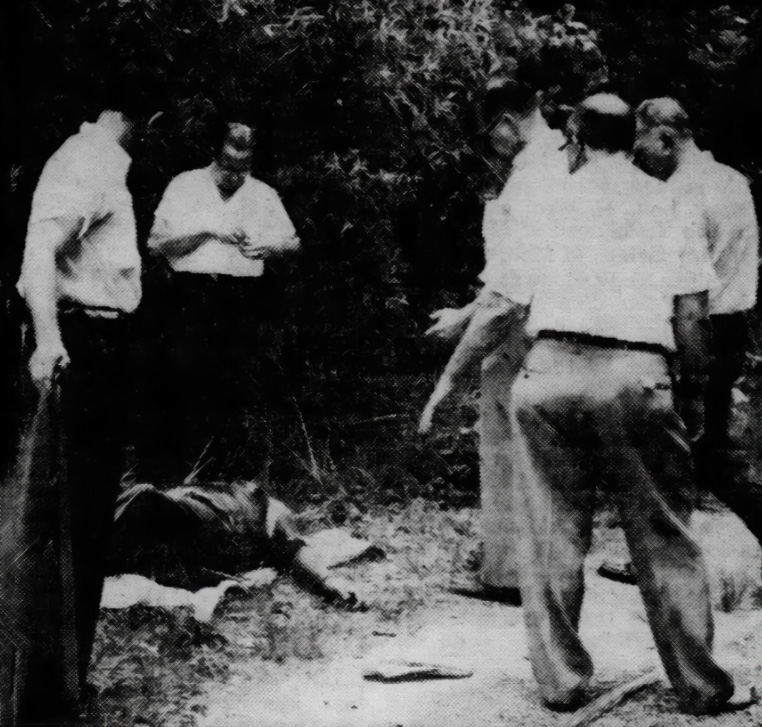
The cars drove south to Kissimmee via Vineland Road. They then headed southwest, down the lesser-traveled Old Tampa Highway that paralleled 17-92. After passing through the village of Intercession City, they turned onto a dirt path in the Reedy Creek swamp in Osceola County, about a mile before the Polk County line. They dumped Milam’s body in a ditch and continued into Polk County.
Milam’s badly decomposed body was found six days later. MacDill Air Force Sergeant John Sunderstrom and his wife were in the area hunting for swamp cabbage when they smelled something rotten before discovering the body.
Ed was shot three or four times (depending on reports) with a 38-caliber pistol; two were through-and-through shots in the right abdomen. The fatal shot was just below the heart. Profilers say it was personal. This was not the quick, execution-style killing of a typical mob hit. His arm was brutally broken, with bones sticking through his flesh. The side of his head was caved in from a blunt force blow.
His broken glasses were found nearby. His diamond ring, Elks Club fraternal ring, and watch were still on his body. His left shoe and wallet, which his wife says contained $2,000 in cash (around $24,000 adjusted for inflation), were missing. A key piece of evidence was found in his back pocket: his little black book with the contact information of a bevy of underworld figures, prominent businessmen, politicians, and dignitaries.
Just a mile down the road, on the Osceola side of the Polk County line, was The Palms bar. Orange County Sheriff Dave Starr suggested this location was significant. The country tavern was a notorious meeting place for area mobsters and ruffians. It was strategically placed in “wet” Osceola County as a destination for partaking in beverages illegal in Polk County.
A tri-county investigation dragged on for months. The murder is believed to have been conducted in Orange County, the dump site in Osceola, and the trio of killers are said to be at large in Polk County. Orange County took primary responsibility, led by Sheriff Dave Starr and chief investigator L. J. Swann.
Despite announcements that they believed they knew who committed the crime, no arrests were ever made. There was never enough evidence to prosecute (or witnesses willing to testify!).
Leading Theories
Four potential motives were widely circulated:
- Milam was trying to muscle back into Polk County and was cut down by a rival.
- They were worried that Milam was talking to the IRS about bolita revenues of himself and former associates.
- They believed he knew too much and might testify against others. He had previously testified against Sheriff Williams and wanted to get off probation.
- Some worried he was “getting religion” because he attended Zora Methodist Church in Hazelhurst, Georgia. This was of particular concern because another local, Frank Duskin of Winter Park, became an evangelical minister, and his testimony was responsible for putting Harlan and others in jail.
Rumored Suspects
Scores of people could have been responsible for conducting or ordering the hit. These are only a few.
- Harlan Blackburn. Notoriously vicious. Milam was a threat to his territory. Nuff said.
- Santo Trafficante, Jr. Ruthless. The top boss of Tampa (and all of Florida, really). He wanted to own Central Florida via his proxies (primarily via his Colonel, Harlan). Also, reportedly, Milam kept the odds of his games at 70-to-1. That set the market rate that others had to follow to compete. After Milam was killed, Trafficante lowered the odds to 60-to-1.
- Larry Wilson. He was a painter who dated Milam’s daughter. He spent time in Georgia with Milam, painting his clubs. The two went fishing three days before his murder. When first questioned by police, he denied knowing Milam. Wilson owned a car that matched the description of the Ford, including the 1-4 being the first two digits on his license plate.
- Emmett Caraker. They were friends and business partners for many years. However, Caraker went to prison after both testified against Sheriff Williams, and Milam did not. He could have also been mad that Milam was working on a deal for the Lakeland business with Aubrey Marvin Lee instead of him. As soon as Caraker heard that Milam’s body had been discovered, he raced to Orlando. He visited both Mary Milam and Orange County Sheriff Dave Starr. Reportedly, he was there to comfort the widow of his friend. He offered to answer any questions for the sheriff to clarify that he had nothing to do with it. He doth protest too much? Milam was also said to be “scared to death” that Caraker would testify against him.
- Leo Faurot. He was an underboss during Milam’s reign and ran the eastern part of Polk County for Milam. He was listed as a witness in the Sheriff Williams case but never took the stand. However, Milam testified to Faurot’s involvement and gave details about his illegal activities.
- JW “Big Rabbit” Holland. He had taken over as the Bartow boss and would not have appreciated Milam nosing back into the area.
- Sheriff Williams. This is a stretch, but he would have certainly had a motive after Milam (and Carraker) were star witnesses against him, which got him kicked out of office and charged with felony conspiracy. More about that story…
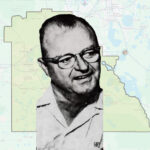





One response to “Gangland Life and Murder of Ed Milam”
[…] Seminole County was the hub of the Central Florida bolita industry under mob boss Harlan Blackburn. Well… that is… it was under Blackburn after 1953, when the former boss, Ed Milam’s body was found in a swamp near Disney World. […]